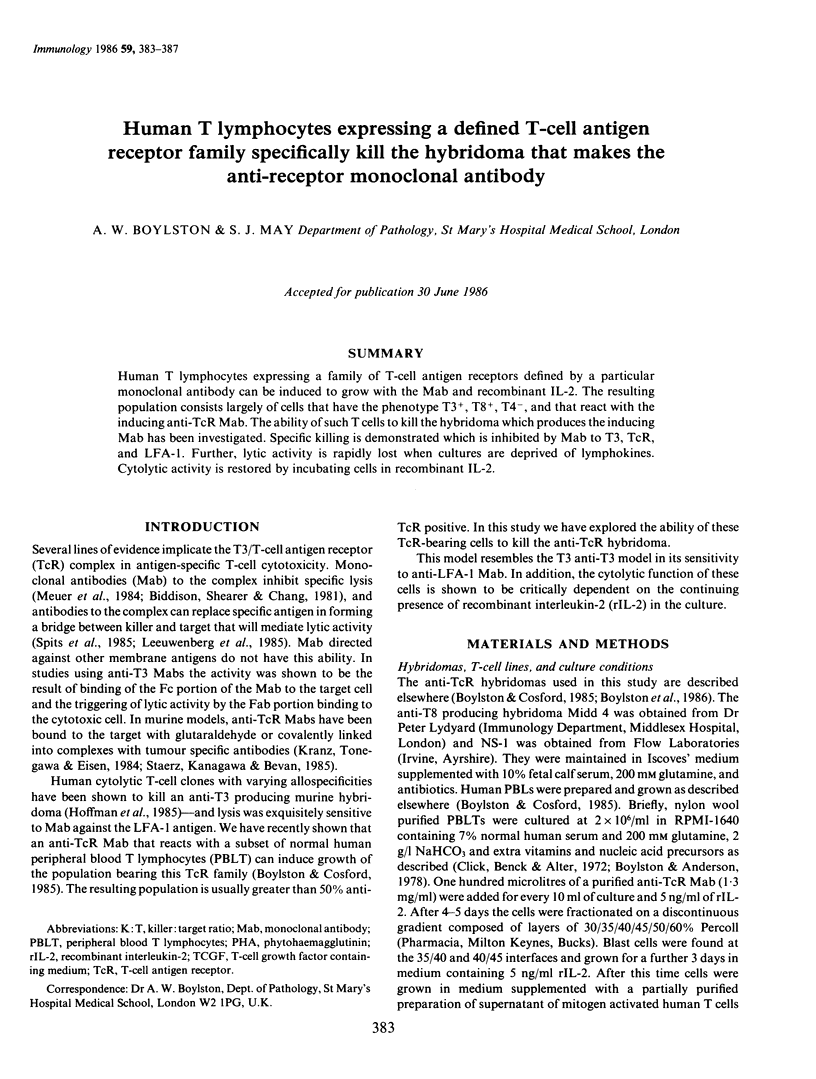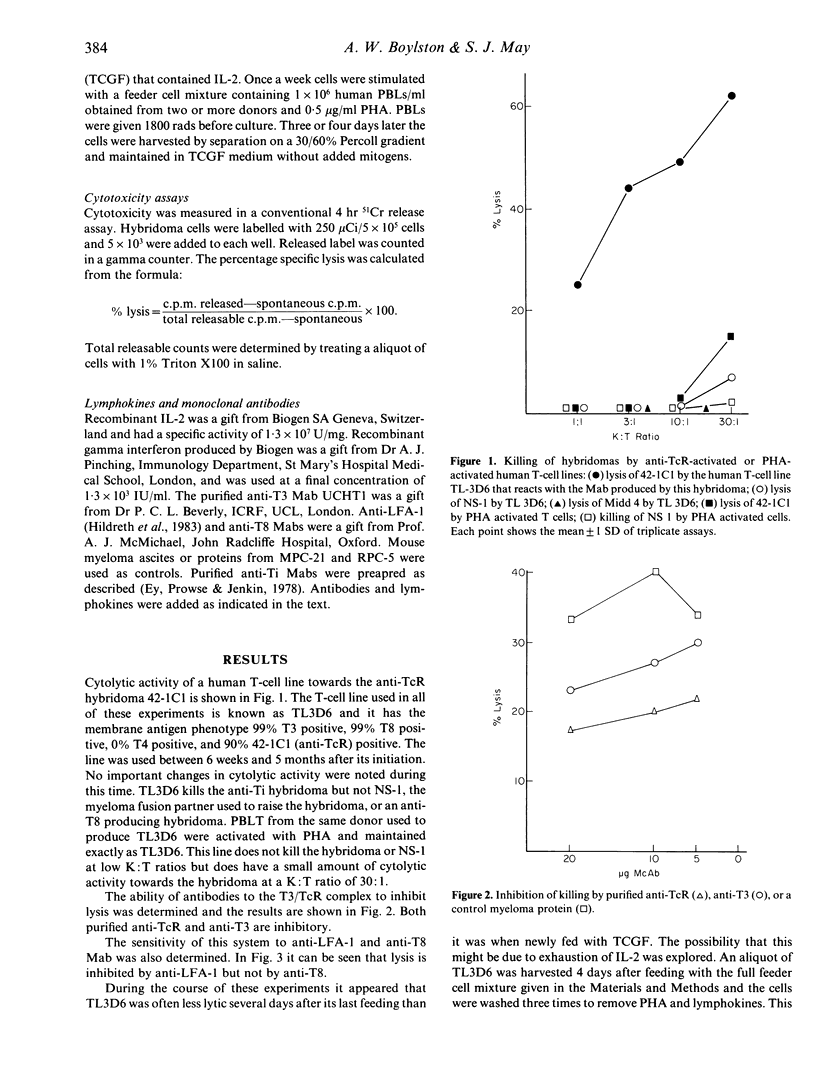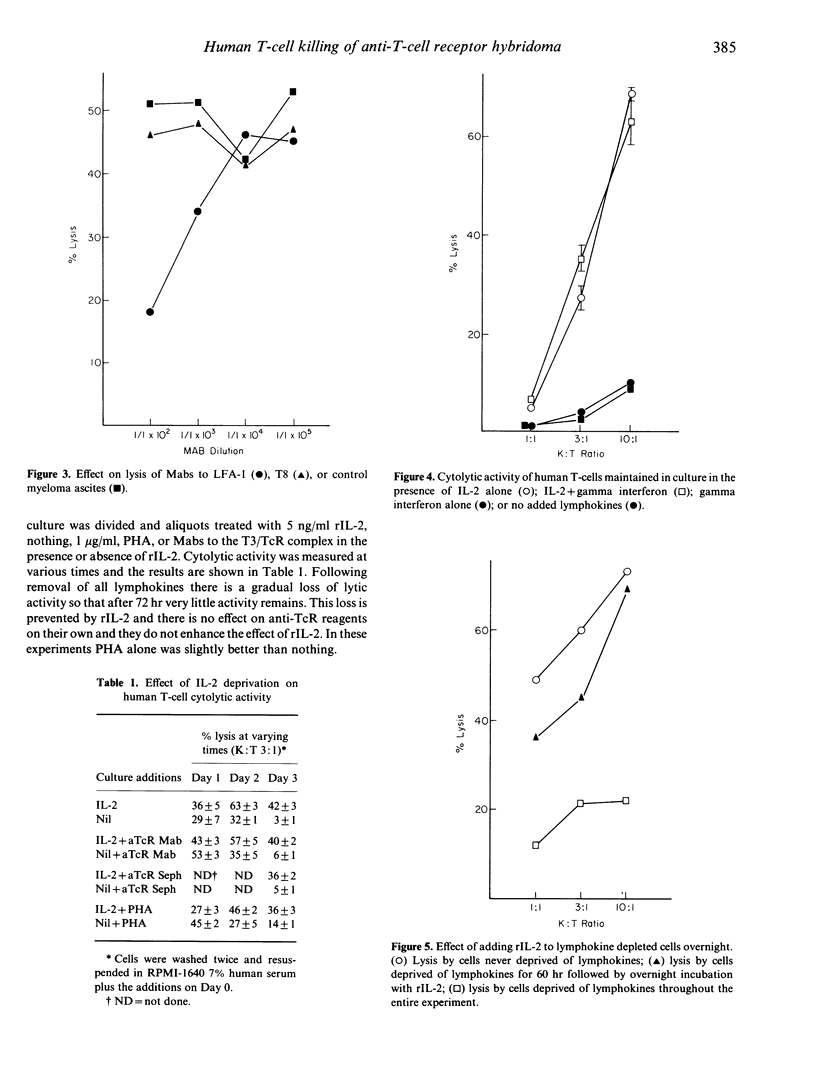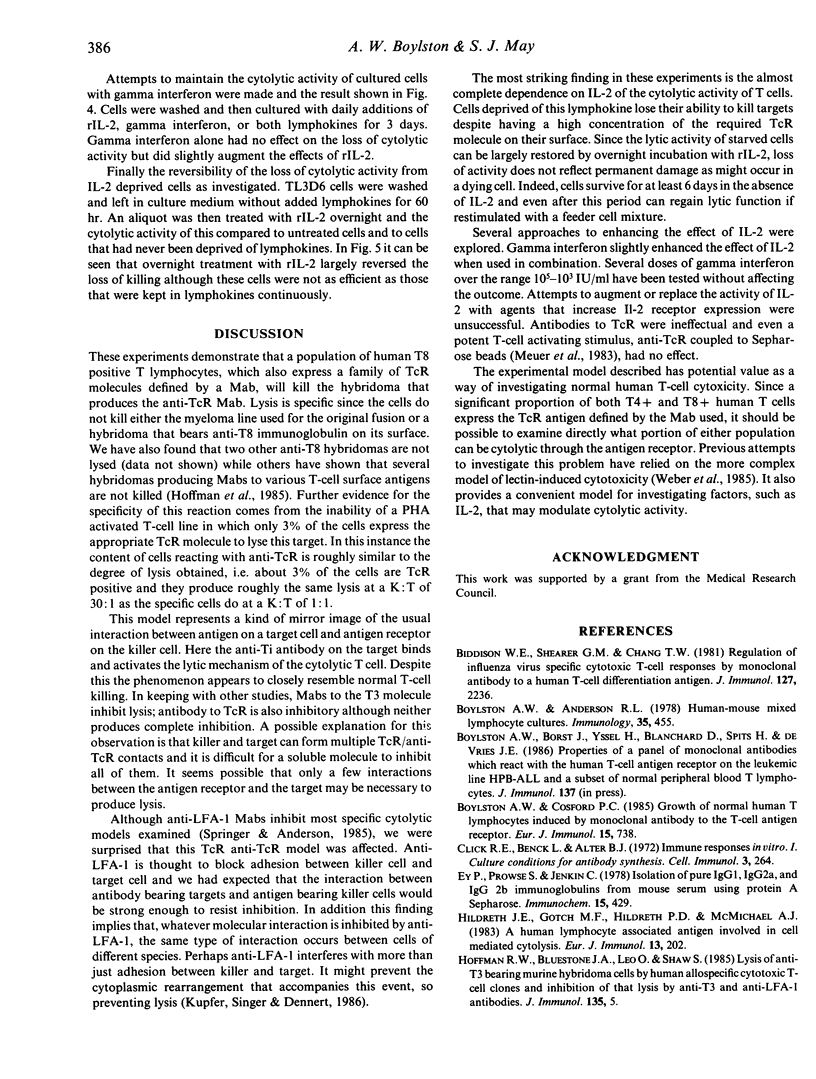Abstract
Human T lymphocytes expressing a family of T-cell antigen receptors defined by a particular monoclonal antibody can be induced to grow with the Mab and recombinant IL-2. The resulting population consists largely of cells that have the phenotype T3+, T8+, T4-, and that react with the inducing anti-TcR Mab. The ability of such T cells to kill the hybridoma which produces the inducing Mab has been investigated. Specific killing is demonstrated which is inhibited by Mab to T3, TcR, and LFA-1. Further, lytic activity is rapidly lost when cultures are deprived of lymphokines. Cytolytic activity is restored by incubating cells in recombinant IL-2.
Full text
PDF




Selected References
These references are in PubMed. This may not be the complete list of references from this article.
- Biddison W. E., Shearer G. M., Chang T. W. Regulation of influenza virus-specific cytotoxic T cell responses by monoclonal antibody to a human T cell differentiation antigen. J Immunol. 1981 Dec;127(6):2236–2240. [PubMed] [Google Scholar]
- Boylston A. W., Anderson R. L. Human-mouse mixed lymphocyte cultures. Immunology. 1978 Sep;35(3):455–461. [PMC free article] [PubMed] [Google Scholar]
- Boylston A. W., Cosford P. Growth of normal human T lymphocytes induced by monoclonal antibody to the T cell antigen receptor. Eur J Immunol. 1985 Jul;15(7):738–742. doi: 10.1002/eji.1830150719. [DOI] [PubMed] [Google Scholar]
- Click R. E., Benck L., Alter B. J. Immune responses in vitro. I. Culture conditions for antibody synthesis. Cell Immunol. 1972 Feb;3(2):264–276. doi: 10.1016/0008-8749(72)90165-7. [DOI] [PubMed] [Google Scholar]
- Ey P. L., Prowse S. J., Jenkin C. R. Isolation of pure IgG1, IgG2a and IgG2b immunoglobulins from mouse serum using protein A-sepharose. Immunochemistry. 1978 Jul;15(7):429–436. doi: 10.1016/0161-5890(78)90070-6. [DOI] [PubMed] [Google Scholar]
- Hildreth J. E., Gotch F. M., Hildreth P. D., McMichael A. J. A human lymphocyte-associated antigen involved in cell-mediated lympholysis. Eur J Immunol. 1983 Mar;13(3):202–208. doi: 10.1002/eji.1830130305. [DOI] [PubMed] [Google Scholar]
- Kranz D. M., Tonegawa S., Eisen H. N. Attachment of an anti-receptor antibody to non-target cells renders them susceptible to lysis by a clone of cytotoxic T lymphocytes. Proc Natl Acad Sci U S A. 1984 Dec;81(24):7922–7926. doi: 10.1073/pnas.81.24.7922. [DOI] [PMC free article] [PubMed] [Google Scholar]
- Kupfer A., Singer S. J., Dennert G. On the mechanism of unidirectional killing in mixtures of two cytotoxic T lymphocytes. Unidirectional polarization of cytoplasmic organelles and the membrane-associated cytoskeleton in the effector cell. J Exp Med. 1986 Mar 1;163(3):489–498. doi: 10.1084/jem.163.3.489. [DOI] [PMC free article] [PubMed] [Google Scholar]
- Leeuwenberg J. F., Spits H., Tax W. J., Capel P. J. Induction of nonspecific cytotoxicity by monoclonal anti-T3 antibodies. J Immunol. 1985 Jun;134(6):3770–3775. [PubMed] [Google Scholar]
- Meuer S. C., Acuto O., Hercend T., Schlossman S. F., Reinherz E. L. The human T-cell receptor. Annu Rev Immunol. 1984;2:23–50. doi: 10.1146/annurev.iy.02.040184.000323. [DOI] [PubMed] [Google Scholar]
- Meuer S. C., Hodgdon J. C., Hussey R. E., Protentis J. P., Schlossman S. F., Reinherz E. L. Antigen-like effects of monoclonal antibodies directed at receptors on human T cell clones. J Exp Med. 1983 Sep 1;158(3):988–993. doi: 10.1084/jem.158.3.988. [DOI] [PMC free article] [PubMed] [Google Scholar]
- Spits H., Yssel H., Leeuwenberg J., De Vries J. E. Antigen-specific cytotoxic T cell and antigen-specific proliferating T cell clones can be induced to cytolytic activity by monoclonal antibodies against T3. Eur J Immunol. 1985 Jan;15(1):88–91. doi: 10.1002/eji.1830150117. [DOI] [PubMed] [Google Scholar]
- Weber W. E., Buurman W. A., Vandermeeren M. M., Raus J. C. Activation through CD3 molecule leads to clonal expansion of all human peripheral blood T lymphocytes: functional analysis of clonally expanded cells. J Immunol. 1985 Oct;135(4):2337–2342. [PubMed] [Google Scholar]


